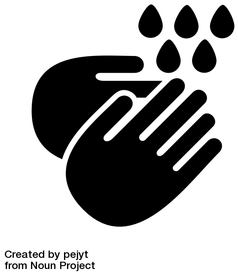The Swine Disease Eradication center at the University of Minnesota recently released practical recommendations regarding biosecurity measures to prevent the spread of COVID-19 in farm workers and other allied operations.
Available in Spanish as well.
What is COVID-19?

Coronavirus Disease 2019, also known as COVID-19, caused by the virus Severe Acute Respiratory Syndrome Coronavirus 2 (SARS-CoV-2) is a “person-to-person” disease. Efforts must be directed at protecting the health of personnel, and their families, involved in the care of animals, and supporting the operation of the farms, and the overall food production supply chain (e.g., feed distribution, feed mills, slaughter plants, truck drivers, etc). Ensuring the continued operation of swine farms and allied operations is a priority.
SARS-CoV-2 virus spreads rapidly among people, mostly through the respiratory route, resembling the spread of influenza. Direct close contact, aerosol spread through droplets and contaminated surfaces are considered the main routes of transmission. To a lesser degree, COVID-19 can also be shed in feces. Currently, there is no evidence that this virus can infect pigs.
Recommendations for farm employees

- Limit farm entrance to essential personnel or personnel performing essential activities. Exceptions to this must be approved by the farms’ biosecurity officer and/or upper management. Essential activities are those required for the care and wellbeing of the animals, workers and facilities, and require prompt attention.
- Persons who are sick or have signs of illness (e.g. fever, coughing, sneezing, runny nose, tiredness, shortness of breath) should stay home and call a doctor or healthcare provider.
- Upon entering the farm, immediately wash hands with soap for 20 seconds. Hand sanitizer is recommended if washing with soap is not available.
- Place special care when disinfecting personal objects that need to enter farms (e.g. cell phones, etc) and all materials entering farms in particular those handled by farm workers. Follow farm established procedures to disinfect incoming materials. Handle the materials with disposable gloves, if available.
- Avoid close physical contact such as shaking hands or hugging when greeting co-workers.

- Limit interactions with people outside of work:
- Avoid travel outside work
- Do not carpool or limit carpooling to essential situations
- Limit travel to essential locations (i.e groceries and pharmacies)
- Avoid large crowds (e.g. church, shopping centers and entertainment events)
- Follow CDC guidelines at www.cdc.gov
- In mechanically ventilated buildings or rooms, increase ventilation rates to increase the number of air exchanges of the rooms and hallways (i.e showers, breakrooms, bathrooms). In naturally ventilated areas, open outside windows (while following biosecurity protocols) to increase air circulation in the area.
- Consider staffing of farms to accommodate different schedules to avoid likelihood of infection of all workers at the same time. For instance, half of the employees work in the morning and half in the afternoon, or half work on Mon-Tu-Sa-Su and the other half on We-Thu-Fri or other schedules that facilitate segregation of personnel while attending the needs of the farm. Keep workers segregated in designated areas and functions to avoid interactions among them and the potential spread of the virus.
- Stagger arrival of workers to the farm so they do not congregate in the common air spaces (e.g. entry hallways, showers or breakrooms).
- Plan break times so that a maximum of 2 workers are in the same room at the same time while they maintain at least 6 feet distance from each other.
- Avoid having groups of people in the same air space. Limit number of meetings that require face-to-face interactions and consider alternatives such as conference calls or email. When conducting these meetings, limit them to small groups and keep at least 6 feet distance between people.

- Clean showers and breakroom, and disinfect surfaces regularly.
- Do not share used materials (e.g towels, kitchen utensils, pens), and wash and dry them between uses.
- Clean and disinfect common spaces frequently after each group of people, and at the end of the day.
- Routinely clean all frequently touched surfaces in the workplace, such as workstations, countertops, fridge/freezer doors and doorknobs. Use the cleaning agents that are usually used in these areas and follow the directions on the label.
- When handling clothing and towels, wear gloves, do not shake the clothes so it minimizes particle dispersion and disinfect clothing hampers.
- Wash hands frequently. https://www.cdc.gov/handwashing/videos.html

- Wash hands with soap for 20 seconds prior to eating or entering common area spaces. Hand sanitizer is recommended if washing with soap is not available.
- Avoid touching your face, eyes, nose and mouth with unwashed hands or gloves.
- If you or a family member test positive, or you suspect that you may have become exposed, let your supervisor know and seek advice on how to proceed. Subclinical infections play a role at spreading the virus.
- If you are sick, stay home until:
- At least 3 days (72 hours) have passed since resolution of fever without the use of fever-reducing medications, AND
- Improvement in respiratory symptoms (e.g., cough, shortness of breath), AND
- At least 7 days have passed since symptoms first appeared.
- Follow recommendations posted by the Centers of Disease Control and Prevention (CDC) or Your State Health Department since COVID-19 recommendations may change.